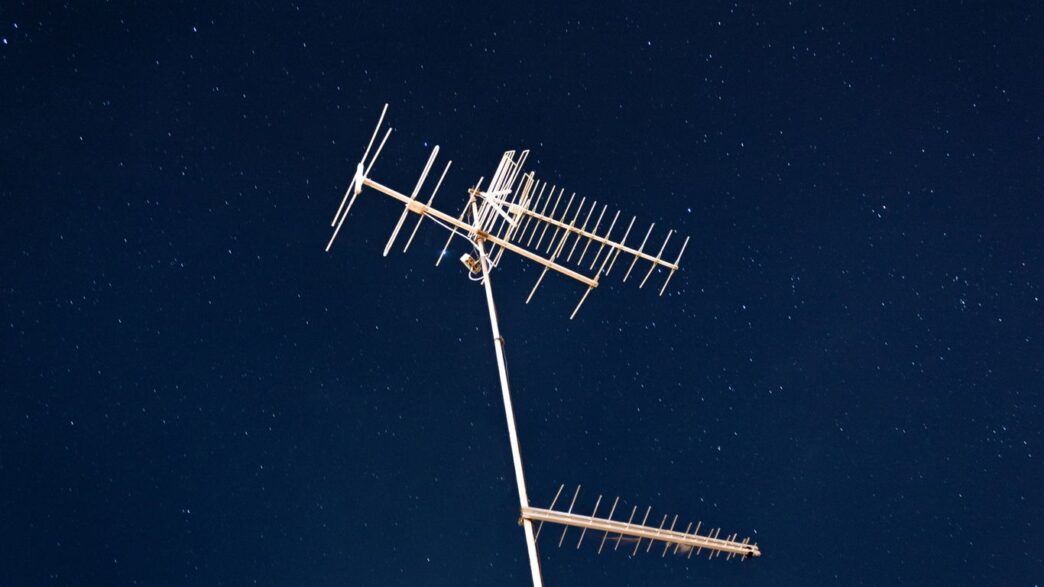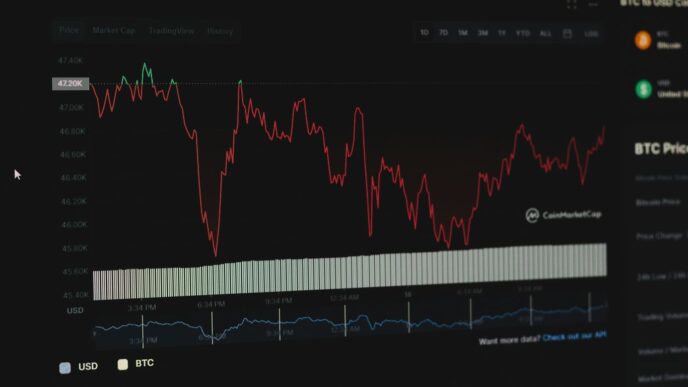The Dawn of Military Satellite Communications
The intense rivalry of the Cold War really pushed the United States and the Soviet Union to find new ways to keep tabs on each other. This competition was the main reason military satellite communications, or MILSATCOM, even started. Both sides desperately wanted to know what the other was up to, especially when it came to military strength. Early rocket technology, which was initially developed for weapons, turned out to be the ticket to getting things into orbit. This meant that from the very beginning, space stuff for the military and space stuff for science were pretty mixed together.
Cold War Imperatives for Space-Based Communication
During the Cold War, the need for reliable communication across huge distances was a big deal. Imagine trying to coordinate forces spread across continents or oceans without being able to pick up a phone. That’s where satellites came in. They offered a way to send messages and data globally, which was a game-changer. This ability to connect forces anywhere on Earth was revolutionary and directly tied to national security. It meant that command centers could talk to troops in the field, no matter how far apart they were, and do it more securely than older methods.
Early Satellite Terminals and Their Limitations
Those first satellite terminals were, to put it mildly, clunky. Think of a whole setup that needed to be hauled around, often in the back of a vehicle. For example, the VSC501 terminal, used in the early 90s, was a mobile unit that required a Land Rover just to move it. And the performance? Not exactly lightning fast. Portable terminals from around 1992 weighed about 40 kilograms and could only manage a data speed of 16 kilobits per second, both sending and receiving. Plus, you needed three people just to carry all the gear. This made them pretty inconvenient for quick deployments or operating in tough spots.
The Role of Satcom in Global Connectivity During the Cold War
Even with their limitations, these early systems were vital for global connectivity. They allowed for basic voice and data transfer, which was a massive step up from what was available before. During operations, like those in Belize in 1992 or Bosnia in 1993, the need for better communication became really clear. Forces operating in difficult terrain or unpredictable situations needed systems that were not only reliable but also easier to move and set up. The challenges faced in these conflicts highlighted the shortcomings of the existing technology and spurred the drive for more advanced solutions that would emerge in the following years.
Evolution of Military Satellite Communications Systems
Military satellite communications, or MILSATCOM, have really come a long way. It’s not just about sending a signal anymore; it’s about making sure that signal gets through, securely, no matter what. Think about it – from the early days of the Cold War, where just having a line of communication across the globe was a huge deal, to today’s complex battlefields where real-time data is as important as ammunition. The whole game has changed.
From Basic Telecommunication to Advanced Defense
Back in the day, military satcom was pretty basic. The main goal was just to connect people and bases across vast distances. It was revolutionary for its time, allowing for voice and simple data. But as military operations got more complicated, especially during conflicts, the limitations really started to show. We’re talking about slow data speeds, equipment that was heavy and hard to move, and systems that weren’t exactly built to withstand enemy interference. It was like trying to have a serious conversation during a rock concert – possible, but not ideal.
The Impact of Conflicts on Satcom Development
Conflicts have always been a major driver for improving satcom. Take the early 90s, for instance. I remember using systems like the VSC501, which was basically a mobile terminal set up in the back of a Land Rover. It was a big step up, allowing for deployable communications. But even then, portable terminals weighed around 40 kilograms and only managed about 16 kilobits per second. That’s slower than your average dial-up modem today! Operations in places like Belize in 1992 and Bosnia in 1993 really highlighted how much we needed systems that were not only reliable but also lighter and quicker to set up, especially when you’re dealing with tough terrain and unpredictable situations.
Technological Advancements in the Early 2000s
The early 2000s were a turning point. This is when purpose-built military satellites started becoming more common, designed specifically for defense needs. This meant better security and encryption. The terminals themselves got smaller and more efficient, which made a huge difference for troops on the ground. It wasn’t just military-made systems anymore, either; we started seeing more use of commercial satellite services alongside dedicated military ones. This hybrid approach really boosted flexibility. A big focus during this time was making sure these systems could handle electronic warfare and jamming attempts. Encryption got a serious upgrade, and we began building in redundancy – having backup satellites ready to go if something happened to the primary ones. It was all about making sure the communication lines stayed open.
Modern Military Satellite Communications Systems Today
Today, satellite networks are pretty much the backbone of how modern militaries operate. They’re not just for basic calls anymore; they handle real-time data, help with navigation and timing (that’s PNT for you), and keep everything secure. It’s a far cry from the early days.
Compact and Capable Satellite Terminals
Forget those massive boxes we used to lug around. The satellite terminals you see today are seriously small and light. We’re talking about units that weigh around 8 kilograms, which is a huge difference from the 40-kilogram setups from the early 90s. Even though they’re tiny, they pack a punch, offering data speeds that are way faster than what we had back then. This makes them super easy to move around and set up quickly, which is a big deal when you’re on the move.
Here’s a quick look at how far we’ve come:
| Feature | Early 1990s Terminals | Modern Terminals |
|---|---|---|
| Weight | ~40 kg | ~8 kg |
| Downstream | ~16 kbps | 20+ Mbps |
| Upstream | ~16 kbps | 4+ Mbps |
| Portability | Low | High |
Real-Time Data Transfer and PNT Systems
Being able to send and receive information instantly is what it’s all about now. Satellites make sure that data, whether it’s video feeds from drones, intelligence reports, or just voice calls, gets where it needs to go without delay. Plus, the Positioning, Navigation, and Timing (PNT) systems that rely on satellites are critical. Knowing exactly where you are and when is non-negotiable in any operation.
The Backbone of Joint Operations and Multi-Domain Warfare
Modern conflicts aren’t fought by just one branch of the military anymore. It’s all about joint operations, where different services work together. Satellites are the glue that holds this all together, allowing air, land, and sea forces to share information and coordinate their actions. This is especially true in multi-domain warfare, where operations span across land, sea, air, space, and cyberspace. Without reliable satellite communications, coordinating these complex, interconnected operations would be practically impossible.
Satellite Networks as Digital Fortresses
These days, military satellite networks are basically digital castles. They’re built to keep important information safe and make sure operations keep running, even when bad guys are trying to mess things up. Think of it like an old castle with thick walls, a moat, and guards. Satcom systems use a bunch of different defenses to stay strong and secure.
Advanced Encryption and Quantum Capabilities
Keeping communications secret is a big deal. That’s why encryption has gotten way better. Even if someone intercepts the messages, they won’t be able to read them. And the next step, quantum encryption, is supposed to make things even more secure, almost impossible to break into.
Redundancy and Resilience Strategies
Having just one satellite is risky. If it breaks or gets attacked, everything goes dark. So, they use multiple satellites in different orbits. If one goes down, others can pick up the slack. This means communication stays on, no matter what happens. It’s like having backup generators for your whole communication system.
AI-Driven Threat Prediction and Cybersecurity Defenses
These systems are also getting smart. Artificial intelligence can spot weird things happening, like strange signals or attempts to hack in. By predicting problems before they happen, they can get ready to defend themselves. Cybersecurity is layered, with systems that watch for intruders and can react fast to stop hackers and spies. This is super important because enemies are increasingly targeting space stuff to disrupt military actions.
Future Trends in Military Satellite Communications
The world of military satellite communications is always changing, and what’s coming next is pretty exciting, if a bit complex. We’re looking at a future where satellites are smarter, faster, and more connected than ever before. The main goal is to keep our forces linked up and informed, no matter what or where.
Emerging Technologies Redefining Communication
Things are getting seriously advanced. Forget just sending messages; we’re talking about communication that’s practically uncrackable and incredibly quick.
- Quantum Encryption: This is a big one. It’s like a super-secure lock for data that, in theory, can’t be picked. It’s designed to make sure sensitive information stays private, even if someone manages to intercept it.
- Laser Communications: Instead of radio waves, we’re seeing more use of lasers. These can send a lot more data, much faster, and are harder for enemies to mess with or jam compared to older methods.
- AI and Machine Learning: These aren’t just buzzwords. AI is being used to help satellites figure things out on their own, predict problems, and even make decisions without constant human input. This means systems can adapt on the fly.
Autonomous Constellations and Hybrid Architectures
We’re moving towards satellite systems that can manage themselves. Think of a whole group of satellites working together, organizing themselves, and adjusting to whatever the mission needs. This makes things much more flexible.
- Self-Organizing Networks: Satellites will be able to form their own communication networks, optimize how they talk to each other, and reroute signals if something goes wrong. This relies heavily on AI.
- Hybrid Networks: The future isn’t just about satellites. It’s about blending space-based communication with ground networks and other systems. This creates a more robust and adaptable communication web, allowing resources to be shifted where they’re needed most.
The Criticality of Defending Space-Based Assets
As these systems become more important, they also become bigger targets. Keeping them safe is a huge priority.
- Advanced Threat Detection: We’re developing better ways to spot unusual activity, like strange signals or attempts to hack in. AI plays a role here too, helping to predict potential attacks before they happen.
- Resilience and Redundancy: If one satellite or part of the network goes down, others need to pick up the slack immediately. This means having backups in different orbits and using smart routing to keep communications flowing.
- Cybersecurity: Protecting these digital fortresses is paramount. This involves multiple layers of defense to stop cyberattacks and espionage, making sure our communication lines stay open and secure.
Key Systems and Global Capabilities
When we talk about military satellite communications, it’s not just one big system. It’s a whole network of specialized satellites and ground gear that different countries and alliances use. Think of it like different brands of smartphones – they all do the same basic thing, but they have their own unique features and ecosystems.
US Advanced MILSATCOM Systems
The United States has been a leader in this space for a long time. They’ve got systems like AEHF (Advanced Extremely High Frequency), which is a big upgrade from the older Milstar. AEHF is all about super secure, jam-resistant communication, and it’s vital for things like nuclear command and control. Then there’s the Wideband Global SATCOM (WGS) system. This one is like the workhorse for high-capacity data. It handles everything from sending intelligence, surveillance, and reconnaissance (ISR) data back to base to keeping troops connected on the ground. It’s pretty flexible, allowing data to be routed between different frequency bands and offering good protection against jamming.
International Sovereign Capabilities
It’s not just the US, though. Many other countries have their own satellite communication programs. The UK has its Skynet program, which has been around for ages, providing secure comms for their armed forces. France has its Syracuse series, with the latest version, Syracuse IV, being quite advanced. India has also been building up its capabilities with satellites like GSAT-7 (Rukmini) for the Navy and GSAT-7A for the Air Force and Army. These national systems are important because they give countries independence and control over their own secure communication networks.
NATO’s Role in Alliance Communications
For an alliance like NATO, having a common way to communicate is super important. They don’t just rely on individual member nations’ systems. NATO has its own dedicated satellite communication systems. This allows all the allied forces to talk to each other securely and effectively, no matter where they are or what national systems they might normally use. It’s all about making sure everyone is on the same page during joint operations. Think of it as a universal translator for military communications across the alliance.
The Future is Connected, and Secure
So, looking back, it’s pretty wild how far military satellite communications have come. We’ve gone from clunky gear that barely sent a signal to these super-advanced systems that are basically digital fortresses in space. It’s all about staying connected, no matter what, and keeping our information safe. As things keep changing, with new tech like quantum encryption and AI popping up, the focus is going to stay on making these systems even tougher and more reliable. It’s a constant race, really, to keep up with threats and make sure our forces can talk to each other and get the job done, no matter where they are or what’s going on. The sky’s the limit, I guess, but it’s also a pretty busy place these days.














